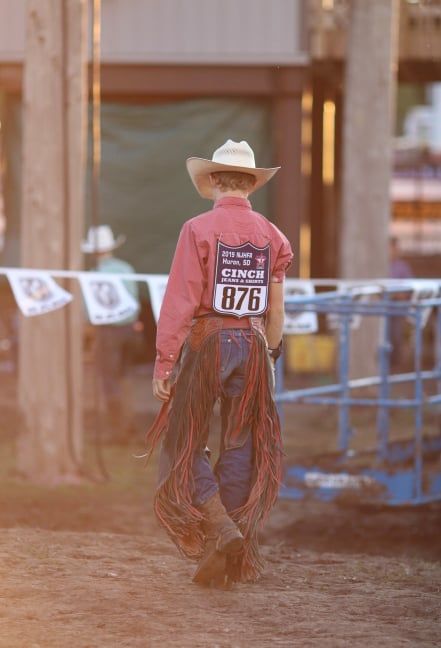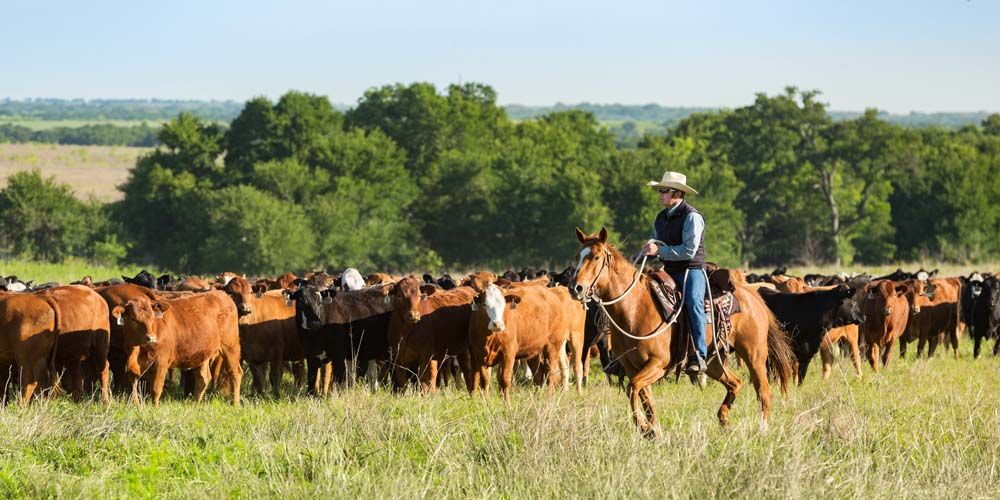One Tough Sport, Rodeo rides on rural life’s fabric


Written by Jonathan Reed, Editor
November 12, 2019
You know that high school kid who can be found shooting baskets or running plays all hours of the day or night?
The thing is, there’s a kid out in the country who’s been practicing his—or her—rodeo skills before your in-town kid even thought about getting out of bed.
But unlike the more well-known urban sports, rodeo has been around at least as long, and demands as much or more from its athletes.
Football and basketball get the spotlight in high school and college sports, and sometimes baseball, volleyball, and soccer. But rodeo? It turns out rodeo’s been hiding in plain sight all along.
Back in the day
There’s no James Naismith (basketball) or Abner Doubleday (baseball) involved in rodeo’s origins. The sport of rodeo came about spontaneously from daily tasks used by cowboys in the American West: roping, precision riding, steer wrestling, and just for fun, bronc and bull riding.
Its roots date back to the first Spanish settlers in North America. According the ProRodeo Hall of Fame, the skills used by Spanish vaqueros were passed along to American cowboys as frontier territories were expanding. The word “rodeo” is originally Spanish, meaning “to surround” (as in surrounding cattle).
Spanish rodeo focuses on style, while the American version is all about speed
The cowboy way of life became romanticized near the end of the 19th Century with traveling shows like Buffalo Bill’s Wild West exhibition and legendary plainsman Wild Bill Hickok’s Grand Buffalo Hunt show.
These put cowboy skills on display with shooting, horsemanship, roping skills, and cattle movement—sometimes with bison and help from Native American actors.
There is much discussion about where and when the first rodeo competition was held: Santa Fe, New Mexico, Deer Trail, Colo., and Pecos, Texas all make the claim, says the ProRodeo Hall of Fame. But we do know that the modern sport of rodeo grew from a public competition held in Prescott, Ariz. in 1888 since they created a committee to develop rules.
Today, you can find rodeo events held nearly every day of the year in 47 states, plus events in Canada and Mexico.
The training ground
How big is rodeo at the high school level? The National High School Rodeo Association (NHSRA) has approximately 12,000 members. This includes both high school plus junior high competitors, both boys and girls.
Yes, you can have 12 year-olds competing in bareback steer and bull riding. And they may have started riding years earlier.
Most young competitors learn their skills on the farm or ranch, as part of everyday chores or seasonal cattle work. Horsemanship and general equine knowledge get worked in along the way.
Mom and Dad are usually the foundational coaches for young rodeo competitors. Chances are, they were in rodeo, too
There are hundreds of rodeo clubs that kids can join, beginning with the—are you ready for this?—kindergarten age. Locally-focused, they function as a training ground to teach children not just safety and technique, but responsibility and accountability, too.
There are also local clubs for area kids, in many cases they are part of the high school curriculum, where you can earn a Rodeo Letter to your transcript. Add to this the many regional and statewide rodeo associations and it’s clear that rodeo is part of the fabric of rural life today.
What’s competition like?
Except for events like team roping—with two competitors, roping the head and leg—rodeo is an individual sport, where the athlete is challenging him-or herself against other contestants.
The events read like something out of “Riders of the Purple Sage” by Zane Gray. Among them are Barrel Racing, Tie-Down Roping, Breakaway Roping, Steer Wrestling, Bareback Riding, Goat Tying, Bull Riding, and Girls Cutting.
All are hard, physically demanding challenges requiring split-second timing and robust athleticism.
Rodeo events are explosively fast, and often over in just a few seconds

Because the competition involves speed, horses, livestock, ropes, and dirt, few rodeo athletes finish the day unscathed. It is a dirty, dusty, smelly, and potentially dangerous environment…but not unlike working on the ranch.
Even the title of Rodeo Queen—a clear honor to compete for this, as she is considered a spokesperson for the sport—is based in part on horsemanship, not just appearance and poise.
The NHSRA reports there are around 1800 sanctioned rodeos throughout the year in 43 states, plus Canada, Australia, and Mexico. The National High School Finals Rodeo (NHSFR) has about 1500 competitors from all 50 states and Canada’s provinces, as well as Mexico and Australia.
The 2020 NHSFR will be held in Lincoln, Neb. July 19-25. The National Junior High Finals Rodeo is only slightly smaller with around 1100 athletes competing in Des Moines, Iowa on June 21-27, 2020.
Competitor culture
On television, rodeo cowboys are portrayed as rawhide tough inside and out, physically strong, and dedicated to their events. That’s largely true, plus rodeo kids tend to be unfailingly polite to people.
In fact, the mission statement of the NHSRA involves promoting “the highest type of conduct and sportsmanship” among its participants. Local and state charters also reflect participation to “build responsibility, cooperation and good conduct.”
Keep in mind that “going to the rodeo” is a family affair, with Mom and Dad, siblings, grandparents, horses, and sometimes the family dog camping out for the duration. Rodeo families bivouac in the same areas and, like all campers, interact with each other. At regional and national rodeos, campers and competitors get to meet and share with families from other states, regions, and countries.
Between preparing for their own events and and caring for horses, there isn’t a lot of time to become a poor citizen.
James Higginbotham, the executive director of the NHSRA, says that the two big benefits of rodeo are family time and education. “We know all these kids won’t do rodeo for a living, but we need to get these kids an education…(for) when they get through with rodeo.”
According to some sources, high school rodeo athletes blow away other sports, academically, with up to 90 percent of competitors holding 4.0 grade point averages.
Beyond high school
To be sure, rodeo is a college sport, too. Between association, collegiate, and sponsor scholarships, the most promising rodeo athletes have a chance to further their education and build a competitive rodeo resume in college. Moving from high school to college level is like competing in the Super Bowl every week—the competitive level is that much higher, and the athletes seem to welcome it.
One crucial difference is that competitors become part of a college team, not unlike gymnastics of wrestling. The National Intercollegiate Rodeo Association (NIRA) has 11 regions with 137 member institutions.
Both 2- and 4-year colleges are represented, and attending a 4-year is no guarantee of superiority. Neither is living in an isolated area. Two of the perennial powerhouses in rodeo are Cal Poly State University, San Luis Obisbo, a 4-year school, and Walla Walla Community College.

Tags:Acreage Accents

Acreage Life is part of the Catalyst Communications Network publication family.
















